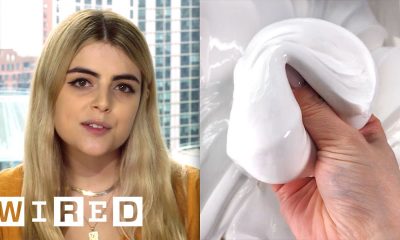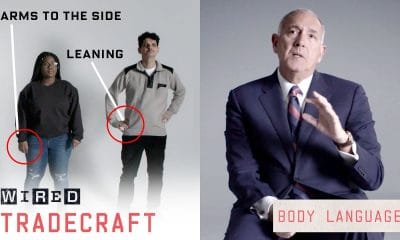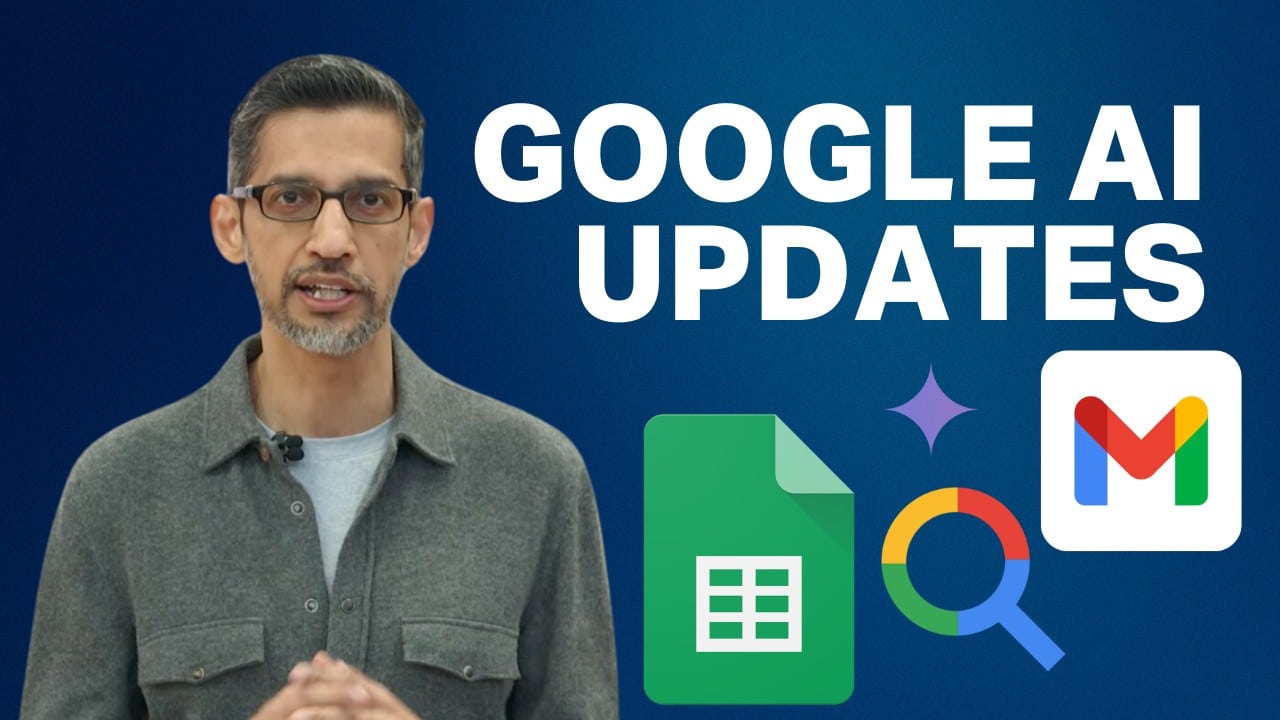From a special black-footed ferret to coral that can withstand warming waters, genetic rescue efforts that use genomics and synthetic biology are helping nature thrive. But despite the huge successes of this kind of intervention, conservation innovator Ryan Phelan points out that fear of unintended consequences often stifles innovation — risking further extinction. She makes the case for embracing the “intended consequences” of genetic tools that have the power to restore Earth’s balance, abundance and biodiversity.
Visit to get our entire library of TED Talks, transcripts, translations, personalized talk recommendations and more.
The TED Talks channel features the best talks and performances from the TED Conference, where the world’s leading thinkers and doers give the talk of their lives in 18 minutes (or less). Look for talks on Technology, Entertainment and Design — plus science, business, global issues, the arts and more. You’re welcome to link to or embed these videos, forward them to others and share these ideas with people you know.
Become a TED Member:
Follow TED on Twitter:
Like TED on Facebook:
Subscribe to our channel:
TED’s videos may be used for non-commercial purposes under a Creative Commons License, Attribution–Non Commercial–No Derivatives (or the CC BY – NC – ND 4.0 International) and in accordance with our TED Talks Usage Policy (). For more information on using TED for commercial purposes (e.g. employee learning, in a film or online course), please submit a Media Request at
Meet Elizabeth Ann.
She’s a black-footed ferret,
America’s most endangered animal.
She was cloned using cells
from a ferret that lived 33 years ago.
Elizabeth Ann is a new hope
for the future of her species,
a chance to actually restore
lost genetic diversity.
She was born for this
intended consequence.
I’ve been working in conservation
for the last 10 years
with innovative scientists
from around the world
to bring biotechnology
to wildlife conservation.
We need to solve the escalating threats
to biodiversity from climate change,
habitat loss, fragmented populations
and wildlife diseases.
These are the unintended consequences
of the human-dominated time we live in.
A time when we need new tools
for the conservation toolbox
and with genetic rescue,
we can actually help stop more species
from crossing the line into extinction.
And the black-footed ferret
is a great example.
The black footed-ferret
historically ranged
all across the Great Plains
of North America,
from Canada to Mexico.
That is, until their habitat was converted
to ranches and farmland.
By 1981, there was only one colony
of ferrets living in Wyoming.
They were brought into captivity,
and the US Fish and Wildlife Service
has successfully been breeding
and releasing these individuals back
into the wild for the last 30 years.
But all 600 living ferrets today
are the descendants
of just seven ancestors.
And with inbreeding that jeopardizes
their long-term survival in the wild.
To solve this challenge
of a lack of genetic variation,
we reached back in time.
Luckily, scientists had the foresight.
Starting in 1975, Dr. Oliver Ryder
and his team at the San Diego Zoo
started banking endangered species,
and it was with one of these cell lines
that we were able to actually
bring in a new individual
who lived 33 years ago,
who had unique genetic variation.
Elizabeth Ann is a result of that cloning.
She has three times more genetic variation
than any living ferret today.
And when she breeds
in the next couple of years,
her offspring will help create
greater resilience for her species.
Now Elizabeth Ann isn’t the only time
that we’ve done cloning.
We’ve worked with the Przewalski’s horses.
These are the only true species
of wild horse remaining in the world.
Historically, they were native
to Central Asia,
but they roamed all the way
from the Pacific
to the Atlantic Ocean for centuries.
Until they were basically
extinct in the wild,
with only several horses
left in captivity.
Conservationists have reintroduced
some of those horses since 1960,
back into the wild.
But all 2,000 horses all living today
are again at risk of inbreeding.
And many scientists
refer to this challenge
as the extinction vortex,
when small, fragmented populations
lose genetic variation
and become at risk
for the vortex of extinction
as their populations dwindle.
Now, with genetic rescue,
we can reverse this extinction vortex
by bringing a new genetic variation
and increasing the long-term survival
of these populations.
And that’s exactly what we did
with this Przewalski’s foal
named Kurt.
That’s actually his surrogate
mother to the right.
She’s an American Quarter Horse,
a different species.
But Kurt’s genome is all wild horse.
Now, here’s Kurt, exactly one year later,
this August.
He’s a wild, healthy,
vibrant Przewalski’s horse.
Now, these genetic rescue stories
could not have happened
without the collaboration
of multiple partners
and the tools of biotechnology.
Fundamental to all of this is the most
essential tool, is genomic sequencing
and the power of bringing
that information into the light
to help the management of these species.
In addition, the bio banking,
the cell culturing
and the in vitro technologies
have made this kind
of genetic rescue possible.
But even these technologies
are not widely adopted by conservation.
We hope to change that.
Emerging technologies
of genetic engineering
hold the promise of helping species
adapt to climate change,
solve wildlife disease problems,
and even help solve
invasive species problems.
But very often these technologies
never get out of the starting gate
because the fear of unintended
consequences absolutely stymies
even the most basic
innovation at the get-go.
Probably there’s no more urgent need
to overcome some of this reluctance
to use these technologies
than in the case of coral.
Coral, as many of you know,
are the most diverse and rich
ecosystems in the world.
They provide a rich biodiversity
for reef-dwelling fish and all ocean life.
And yet, sadly,
50 percent of the Great Barrier Reef
has been lost already to climate change
and environmental degradation.
Estimates predicts that by 2050,
we could lose as much as 90 percent
of the coral in the world.
There is hope.
Scientists around the world
are utilizing new technologies
to cryopreserve
even living coral fragments
that can be transplanted
onto artificial reefs.
This is just the beginning
of some of the work that is pioneering
and can happen.
I’m most excited about the use
of the new technologies
for developing stem cells.
Now these stem cells could be used
to actually genome edit in
thermal resilience to warming oceans.
Now, you may be
looking at that and saying,
“Genetically modified corals?
What about the unintended consequences?”
This question comes up so often
with any innovation in science,
we decided to actually identify
just how often, when humans intervene,
did they cause the disasters
that people fear so much.
And yes, your classic stories
of humans intervening in nature
and causing disasters,
like bringing rodents to islands,
that stowed away
on colonial sailing ships.
These invasive species and others
have caused greater than 60 percent
of the extinctions worldwide
since the early 1500s.
And then there’s the poster child
for intentionally releasing
the poisonous cane toad to Australia.
Back in 1935,
the sugar cane industry brought
this invasive, poisonous cane toad in
to solve their problem
with beetles in their crops.
It didn’t do much for the beetles,
and instead, since 1935,
it has continued to work
its way across Australia,
leaving nothing in its wake
and killing native species
all along the way.
These disasters stoke the minds of people
about fear of intervention,
and yet they happened in an era
when there was little regard
for the overall environmental ecosystem.
And they were done, in some cases,
even with profit motivation in mind,
they weren’t done
for conservation benefit.
And sadly, we never hear
about the success stories.
So when we looked at the research
about what happens when conservation
intend to intervene in nature,
we found a very different story.
All across the globe, for over a century,
scientists have been introducing
and reintroducing plants and animals
with no environmental harm.
You may know the classic success story
of introducing wolves to Yellowstone.
But that’s not the only one.
Think about this.
Over 1,000 species have been introduced
all across North America
for the last 125 years.
There has been no documented case,
except one,
of any intervention
causing a local extinction.
That was a native freshwater fish
from a small spring in Alabama.
Ninety-nine percent of these
interventions have succeeded
in achieving their intended consequence.
So you may look at this and wonder,
if intervention is so common in nature,
why aren’t we more aware of this?
And I think it’s because sometimes
success is actually invisible to us.
Take, for example, this image
of the Great Smoky Mountains,
America’s most visited national park.
What we see as pristine wilderness
is actually a very managed environment.
Those elk you see,
they’re the result
of being absent for 200 years
and being reintroduced.
That meadow is a result
of repeated controlled burns.
And non-native insects have been used
to control pathogens and invasive pests.
And there’s one more iconic species
that could come back to this forest.
That’s the American chestnut tree.
Historically, this majestic tree
rained down sweet nuts and fed humans
and animals alike for centuries.
For thousands of years,
it was the most abundant tree species
across the eastern deciduous forest.
It’s lumber was used to create
fine musical instruments
and hardwood furniture.
And until 1800,
there were four billion
of these trees across the forest
until blight, a fungal blight
that came in, imported,
invasive species,
absolutely wiped out these trees.
By 1950, all four billion
trees were decimated.
Now, since that time,
scientists have tried for decades
to figure out how to create
a blight-resistant chestnut tree.
And it’s happened.
Scientists at the State University
of New York have identified a way
inserting a single gene from wheat
that will convey blight resistance.
These genetically modified trees right now
are the first chance in 100 years
to restore these majestic
trees to the forest.
The US Department of Agriculture
right now is reviewing these trees
for release into the wild.
These are all bold initiatives.
Engineering coral to withstand
warming waters,
restoring the American chestnut tree,
the genetic rescue
of the black-footed ferret.
All of these initiatives will require
public engagement and public support.
I think it matters how people
think about intervention.
I believe we need to bring more balance
to how we think about risk.
There will always be unexpected outcomes
to any innovation in science,
but we have the tools and technology today
and the protocols to minimize risks
and maximize benefits.
So the next time you hear
about some bold new idea,
I hope you’ll think first
about the intended consequences.
We don’t have the luxury of time
to stand by and wait and see what happens
for the thousands of plants
and animals at risk today.
We know that doing nothing
can cause extinction.
Instead, let’s carefully
and intentionally plan
with all the tools in the toolbox
to achieve and create the future we want
and not overreact
to a future that we fear.
Thank you.
(Applause)
Chris Anderson: Please stay.
I think this is so interesting.
It seems to me, at the heart
of what you’re wrestling with each time
is this, you know, it’s a moral question.
So most moral philosophers, I think,
would say that fundamentally,
there’s not a difference
between intentional action
and intentional inaction
that leads to the same thing.
So why is it that in so many
areas of public policy
and certainly in the
environmental movement,
there is this huge distinction that people
make between action and inaction?
They would rather not act
and see something go wrong
than take the risk of acting.
Why?
Ryan Phelan: You know, I think
it’s public pressure that they feel
as scientists innovating.
They don’t want to get it wrong.
They have funders that challenged them
on taking on innovation and action.
They run the risk of losing jobs,
funding, security, public shame.
It’s so much easier for people
to stand by and do nothing
and not take ownership of it.
And I think this is really
what we’re trying to say,
is if we can encourage scientists
and innovators to be bold,
it will behoove all of us.
CA: Right.
So one advantage of inaction is just
that you’re less likely to be blamed.
RP: Exactly.
You don’t get credit either.
CA: No.
Ryan, these same technologies,
synthetic biology and so forth,
like in principle, they allow
actual de-extinction,
species that the planet
hasn’t seen for years,
in principle, we could bring back.
Are there any projects
you’re involved with
that excite you or possibly terrify you,
where we could see
such de-extinction taking place?
RP: Well, technically the American
chestnut tree is almost extinct.
You know, people will see
some sprouts come up
because the roots are there,
but they basically, you know,
fail within 15 years.
So they’re not totally extinct,
but they’re very close to it.
You know, we are working on everything
from the woolly mammoth,
as some of you may know,
to the passenger pigeon.
But to me, the most motivating part
of these technologies is,
de-extinction is just a big,
hairy, audacious goal.
And if we get there, it’ll be grand.
But getting there, all of these
genetic rescue tools and technology
can be applied to save endangered species.
It’s all a fundamental tool kit.
It’s essential.
CA: Well, Ryan, you’re an extremely
compelling and persuasive
and trustworthy voice, I would say.
So thank you so much
for the work you’re doing
and for sharing this.
(Applause)

 Science & Technology4 years ago
Science & Technology4 years ago
 Wired5 years ago
Wired5 years ago
 CNET4 years ago
CNET4 years ago
 Wired5 years ago
Wired5 years ago
 Wired5 years ago
Wired5 years ago
 Wired5 years ago
Wired5 years ago
 People & Blogs2 years ago
People & Blogs2 years ago
 Wired5 years ago
Wired5 years ago


















MAXXHEW
October 29, 2021 at 2:37 pm
You know what they sayin’ tho❗
Martins lu
October 29, 2021 at 2:38 pm
I once saw an image that said that if someone lived for 80 years and earned an average of $5,000.00 every day of their life, they still wouldn’t be a billionaire, but rather have about $150,000,000.00. At the bottom of the image was a line that said that no one works to become a billionaire rather invests to become a billionaire. So yeah, we should imitate multi millionaire and billionaire individuals that’s why the rich becomes richer by investing
Young Drew
October 29, 2021 at 2:46 pm
Wow another good one, Ericsson trade services is becoming so helpful than I ever imagined he’d would be in this space .
David smith
October 29, 2021 at 2:47 pm
I never doubted trading and investing with James Ericsson after seeing his POT (proof of trades) l made good profits last months , I hope to make more
The Horse Outside
October 29, 2021 at 2:56 pm
@Esther Marcus just not true. Tell me how a giant fucking yacht costs less than the bare necessities
The Horse Outside
October 29, 2021 at 2:56 pm
@Josh Poppy it isn’t, the rich will keep you down no matter what
Jae Grant
October 29, 2021 at 3:13 pm
What has that got to do with genetic engineering. And why has the only comment to get a heap of replies one about money.
The Horse Outside
October 29, 2021 at 2:47 pm
Eat the rich
TV kanal
October 29, 2021 at 2:48 pm
Greetings from Uzbekistan
All Luvz
October 29, 2021 at 2:51 pm
This was is very enlightening information thank you!💝
🎯Motivation Bay Channel
October 29, 2021 at 3:07 pm
Remember friend, you are the one God has chosen. Don’t give up searching, that might be your last step that will get the door open for you.
I’m in cheering for you.
Wish you luck.🥰
The Horse Outside
October 29, 2021 at 3:22 pm
Lol God ain’t got nothing on the main man Zeus
Bigboikilljoy
October 29, 2021 at 3:29 pm
gods fake
『Generic_Username』
October 29, 2021 at 6:44 pm
nice comment, even though some may not believe in god
『Generic_Username』
October 29, 2021 at 6:44 pm
Have a good day! 🙂
rickie paguyo
October 29, 2021 at 3:11 pm
Nice to hear and watch this topics,programs for the restoration of original species
Jae Grant
October 29, 2021 at 3:11 pm
A lovely message to make us feel better about mining. Warm and fuzzies, now I can feel better about my phone and car because we can unextinct everything when we’re done. 🙂 when will we be done?…
Thomas Voloshen
October 29, 2021 at 3:20 pm
Biodiversity…..leave viruses and bacteria alone or clone them.
She’s doing good work. But, there are many questions to be asked and many unanswered when it comes to tinkering with genomes.
Thomas Voloshen
October 29, 2021 at 3:24 pm
I’ve heard too many are Bullshiting us about coral.
DON MORRIS
October 29, 2021 at 3:45 pm
Sustainability is not part of the human parasites plan. It’s against human nature.
Ehsan Sabaghian
October 29, 2021 at 4:02 pm
Amazing talk and another proof of the value of the scientific intervention.
BrainWaveS101
October 29, 2021 at 4:05 pm
We save the animals; we save the planet; we might have a hope of saving ourselves
Logic seeker
October 29, 2021 at 4:50 pm
It’s good for animal wildlife conservation, Awesome achievement. Not for human experimentation.
Life Is My Opportunity☀️
October 29, 2021 at 4:59 pm
‘Most people are other people.
Their thoughts are someone else’s opinions, their lives a mimicry, their passions a quotation.’
Oscar Wilde 🎭.
Mo Vo
October 29, 2021 at 6:19 pm
A food patch will fix it. No more animal, plant food needed for humans
Mr. Third Eye
October 29, 2021 at 6:24 pm
Why can’t humans understand the best thing for nature would be for humans to die off…
Timothy Hall
October 29, 2021 at 7:27 pm
It is also possible to breed a problem into the species with the hubris we bring to the situation.
Michael Starlight
October 29, 2021 at 7:43 pm
That’s great good job that would be terrible to lose such another beautiful creature as the black-footed ferret
IronMongoose1
October 29, 2021 at 8:00 pm
Wait–so that’s how you pronounce “Przewalski’s”?
Shrestha Parashar
October 29, 2021 at 8:10 pm
This needs to be done with asiatic lions in gir forest
Brian Bates
October 29, 2021 at 11:37 pm
I would really like to view a living Dodo bird… do all these rescues, as many as you can.
wisdom niko
October 30, 2021 at 1:02 am
60% of ALL EXTINCTION FROM 1500? DAMN.
james kirk
October 30, 2021 at 1:47 am
The earth has had many extinctions in its history, one even wiped out over 99% of life here. But nothing will kill everything. Something always survives. This is how something gets stronger, to develop something new, or changes in some way to be better than before. If it wasn’t for this, we would not be here. If a species dies out, it did not have the necessary genetics for survival in its current environment. Something stronger will take its place. Eventually, something else will come along. When we as a species are advanced enough to write the genome for a brand-new life form, then we can claim the right to control other life. Until then, we have a lot to learn. I do think we try too hard in trying to preserve every single current form of life in an attempt to think we can make some huge change. Really it all come down to feelings, we feel better if we think we are doing something. Take for example the panda, an absolutely terrible genetically designed animal, yet we keep trying to make it survive, to what end? It will never live on its own, it is a failed species.
K4r1m k4li54ri│
October 30, 2021 at 1:50 am
TED | help meeeeeeeeeeeeeeeeee.
TED | tell me what the truth!
TED | How Situation on AFGHANISTAN!
TED | Long live women!
Thank you
UN Women | نساء الأمم المتحدة
So tender, and Lovable!
Long live Girls
Easy and beautiful!
Thank you | TED.
Thank you National GEOGRAPHIC | Channel.
SAVE OUR PLANET 🌍❗
Thank you.
###
.
That Guy
October 30, 2021 at 8:20 am
14:00 no, the unintended consequence as mentioned in this video is the elimination of another entire species or ecosystem. While we do need to be bold in making risks to hopefully improve things, we should do so which great caution.
Also, an educational and informative video on TED? Never thought I’d see the day in 2021…
Lisa Love Ministry
October 30, 2021 at 2:38 pm
Proverbs 9:10
Sonny Lecrone
October 30, 2021 at 3:25 pm
I C…
Taliesin Haugh
October 31, 2021 at 8:16 am
Pretty disingenuos to cite the thousands of reintriduced and nativized NON-GMO species as a rationalization for the GMO experiments. This is a TED talk that depends upon the scientific illiteracy of its audience for carry the argument; for example the most successful artificial coral experiments were with selectively bred corals, forllowing the method we’ve been using for tens of thousands of years to do the selction as pace in a lab, not CRISPR.
I’m all for regrowth, but via native species and conservation, not scifi
Rickesh Patel
October 31, 2021 at 9:44 pm
If the ranch’s and farms ruined their habitat how will the new ones released into that same disturbed habitat going to survive?
Won’t their population just die back down?
I think the best thing we can do for wildlife is cut down our own use of resources.
The less we do/use the more nature will do it’s own thing and come back to life.
I think the same ego mentality is living within people with good intentions as those who just didn’t give a fak.
I’m so impressed with scientific leaps but we are going to be sorely disappointed if we think that will fix it all. We must regress from our constantly destructive mentality and practices, that can change it all even if what we call science never existed.
But no one wants to hear that. Same mentality and ego permeates humanity instead of compassion and empathy.